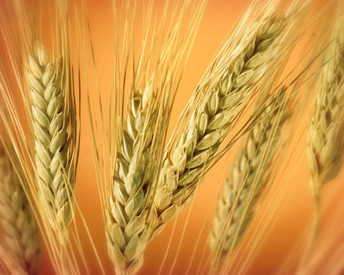
On this secret experiment became known, when in September, a scandal erupted: a unique perennial wheat new "managers of science" was fed to the cattle.
Destroyed at the research and experimental farm "bullfinches" crops - the result of work which has been conducted since 1928, Started her agronomist, future academician Nikolay Tsitsin, and today continued by his followers. "Then Tsitsin has a goal: to get the wheat that is growing in difficult climatic conditions, was resistant to a number of diseases and, most importantly, was multi-year, - explains the current project Manager Vladimir Upelniek, head of the Department of distant hybridization, Main Botanical garden of RAS. He crossed different types of wheat with malicious weeds - a wheat grass. As a result, our scientists have made to the new wheat shoots after mowing, it grew again and always form a spike. Mnogoletnei is a unique feature, never before seen in the world. Americans over 10 years ago set a task to bring perennial wheat, but so far they have failed to do it".
Once the field is planted and then 2 years don't have to plow, you only need to mow. And when you remove grain, you can get another mowing of green mass to feed cattle. And so in any weather and in drought, and when it poured rain. By the way, the lowest yield in this wheat - 20 quintals per hectare. But if to use modern agricultural technologies and fertilizers, to 50 quintals. While the average yield in Russia is 25 quintals per hectare.
"The significance of this experiment is a good illustration of this fact, - says Igor Abakumov, associate Professor of Moscow agricultural Academy named after. Timiryazev, publisher portal "Krestyanskie Vedomosti". - During the war, the fields of crops were at Stalingrad. And when the Nazis already were attacking the city, Stalin ordered troops to throw to "covered" the collection of this strategically important wheat. After the war, the work was given to subordination of the Main Botanical garden of Academy of Sciences. In the 1950s the project was supervised by academicians, nuclear physicists Igor Kurchatov and Anatoly Aleksandrov, the creators of the nuclear bomb. They were interested in what can grow after a nuclear explosion. And our wheat would have survived exactly this catastrophe".
But terrible atomic mushroom was the appointment in "bullfinches" new Director "effective Manager". He decided: we will sow corn. "A unique seed wheat was mowed without the consent of the staff of the Central Botanical garden - lamenting V. Upelniek. - Fortunately, some of the plots remained intact - destroyed those growing seeds for industrial production, which is already waiting for the economy. We will be waiting even longer. And these seeds are needed and in Siberia, and in Crimea".
Translated by service "Yandex.Translation"










